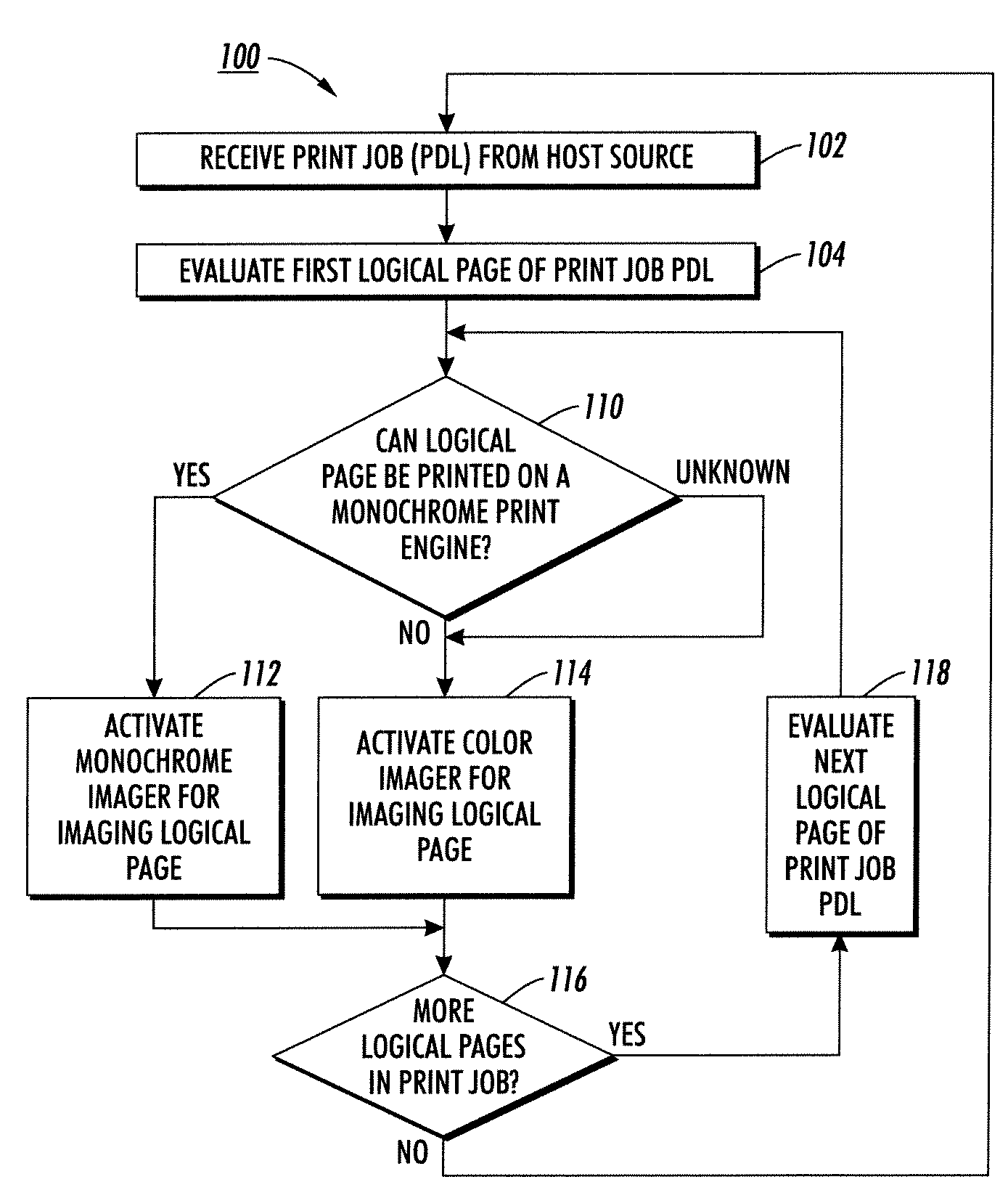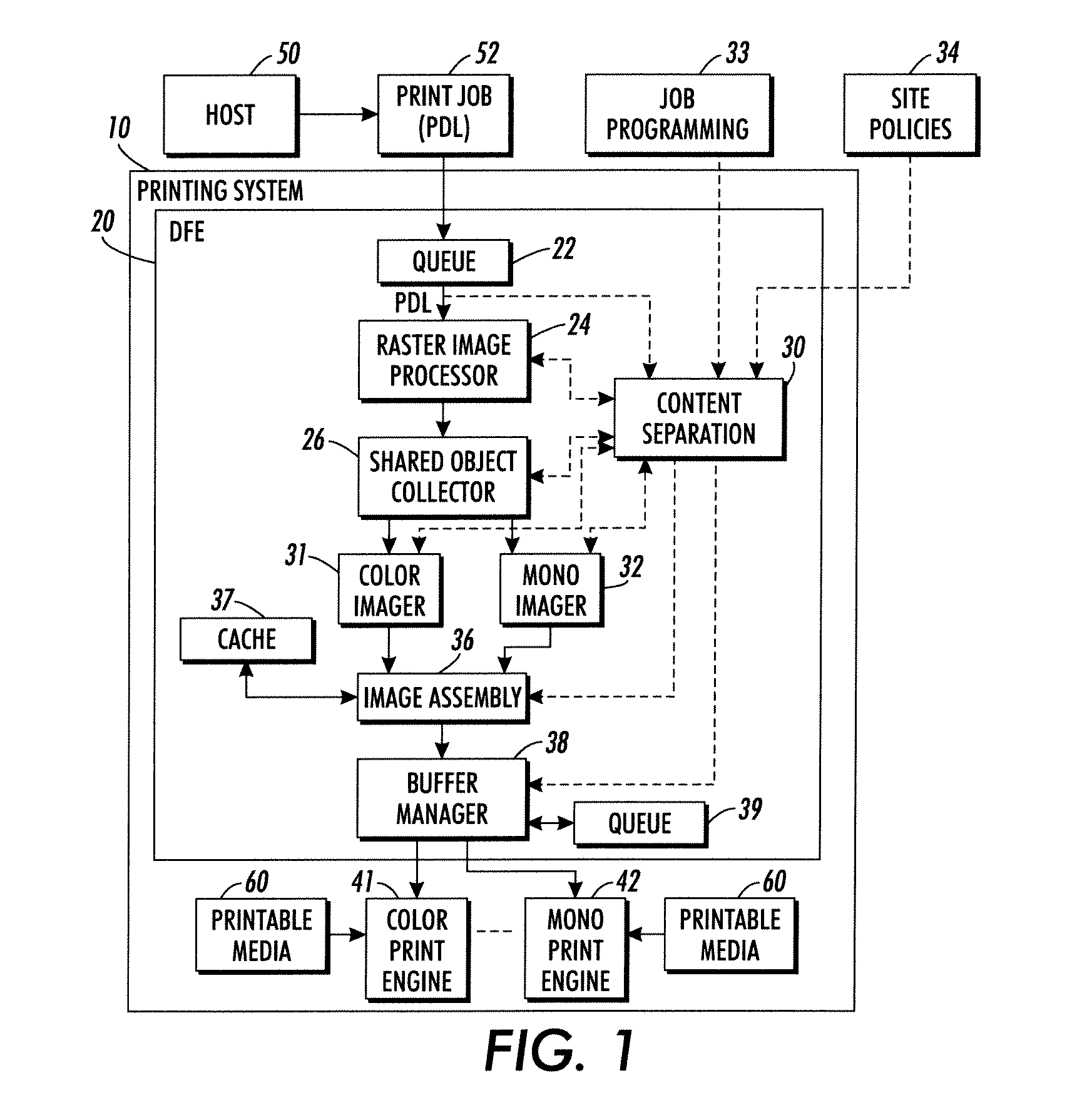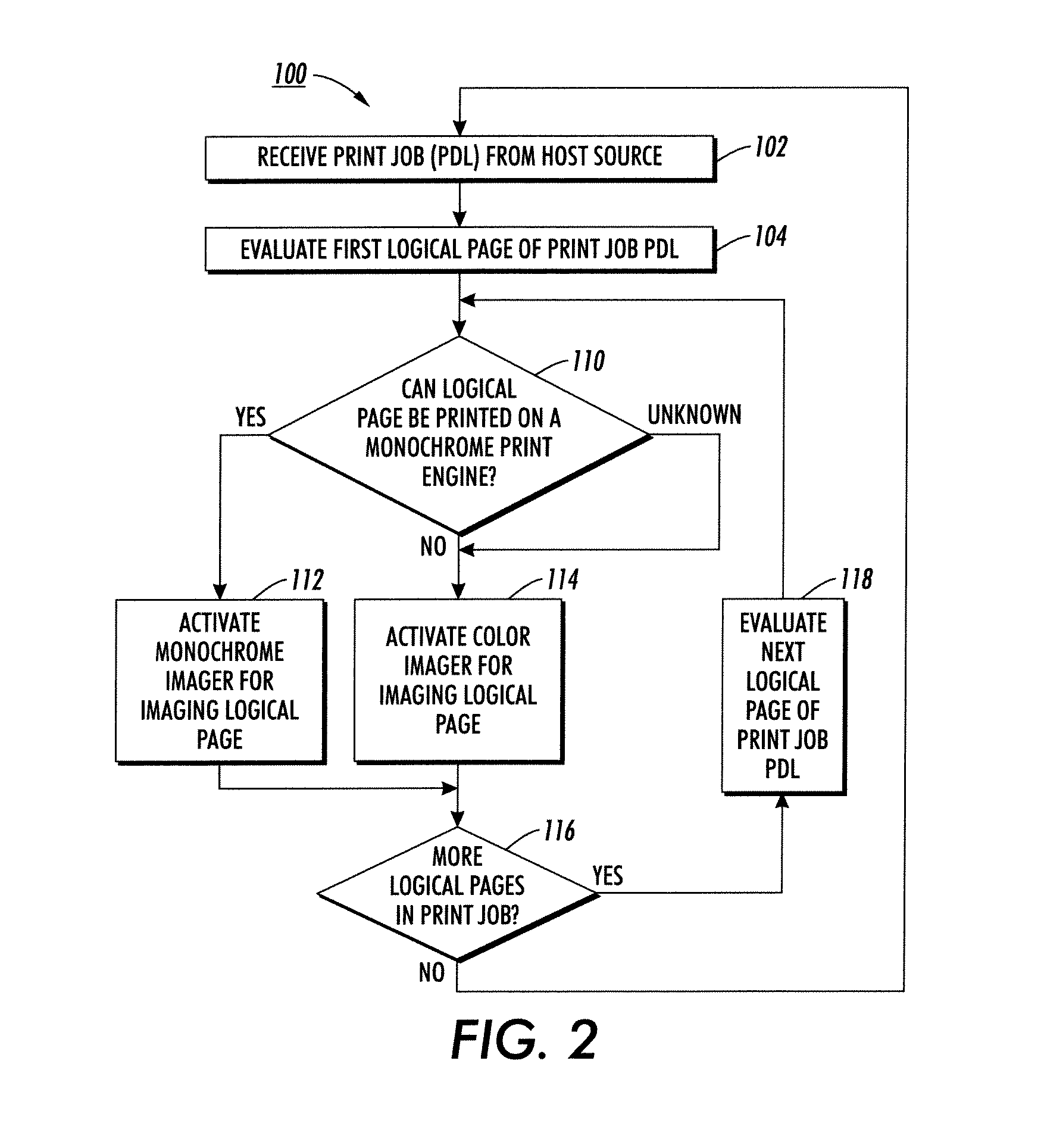System and method for content-based alternate imaging
a content-based alternate imaging and imaging system technology, applied in the field of content-based alternate imaging system and method, can solve the problems of job integrity issues, affecting the quality of content-based alternate imaging, and the approach, which has notable limitations and problems, and achieves the effect of preserving job integrity and facilitating consistent rip settings and resources
- Summary
- Abstract
- Description
- Claims
- Application Information
AI Technical Summary
Benefits of technology
Problems solved by technology
Method used
Image
Examples
Embodiment Construction
[0010]Referring now to the drawings, FIG. 1 illustrates a printing system 10 in accordance with one or more aspects of the present disclosure, comprising a digital front end (DFE) 20 with a single raster image processor instance 24 and a plurality of imagers 31, 32 operatively associated with corresponding print engines 41, 42 that print images on a printable media 60 introduced thereto. The DFE 20 may include additional RIP instances (not shown), such as a PostScript RIP, and PCL RIP, etc., wherein each RIP instance is operatively coupled with corresponding multiple imagers. Furthermore, a single print job may be processed by two or more RIP instances of the same type (e.g., page parallel RIP). The print engines 41, 42 may all be under the control of a common control system for printing images from a common print job stream, although not a requirement of the disclosure. In the example of FIG. 1 two imagers 31 and 32 are provided in the DFE 20 corresponding to a color print engine 4...
PUM
 Login to View More
Login to View More Abstract
Description
Claims
Application Information
 Login to View More
Login to View More - R&D
- Intellectual Property
- Life Sciences
- Materials
- Tech Scout
- Unparalleled Data Quality
- Higher Quality Content
- 60% Fewer Hallucinations
Browse by: Latest US Patents, China's latest patents, Technical Efficacy Thesaurus, Application Domain, Technology Topic, Popular Technical Reports.
© 2025 PatSnap. All rights reserved.Legal|Privacy policy|Modern Slavery Act Transparency Statement|Sitemap|About US| Contact US: help@patsnap.com



